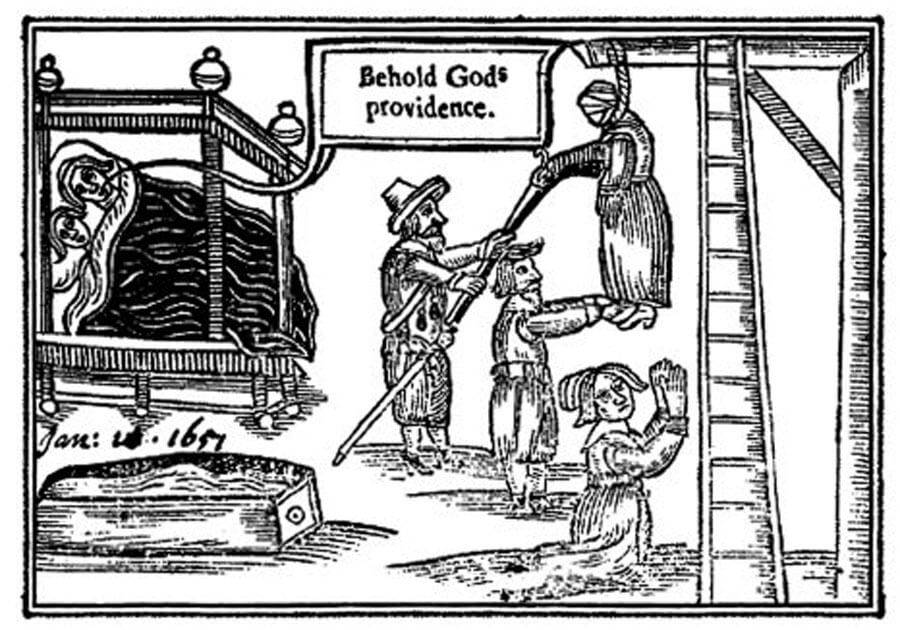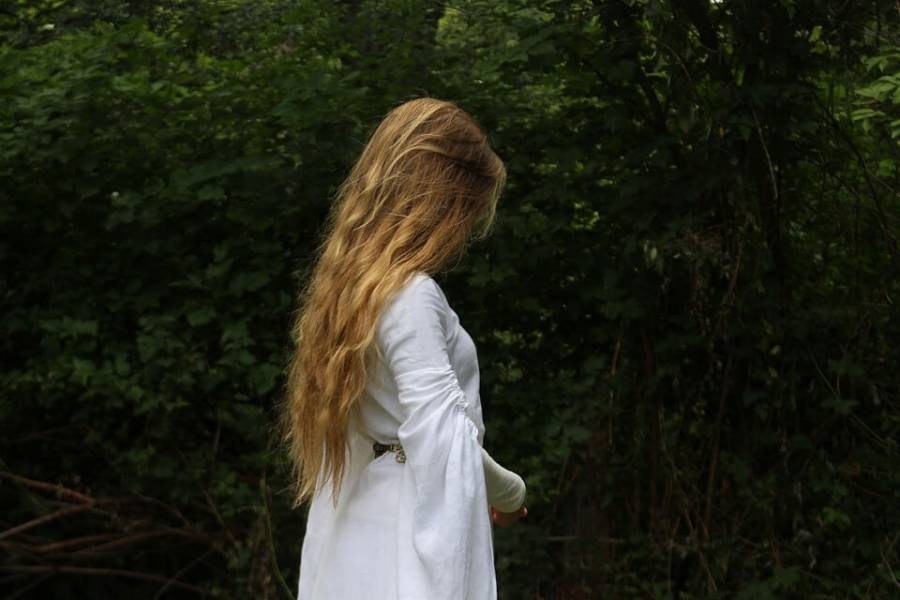The famous Roman Emperor and philosopher – Marcus Aurelius once said “It is not death, that a man should fear, but he should fear never beginning to live”. The philosopher – Socrates also expressed his views on the subject, when he said “Death may be the greatest of all human blessings”. The story of the life of our protagonist here – Anne Greene, also hangs somewhere between these two quotes; death came to her as a blessing & she could lead the best part of life, only after being hanged for murder.

Life is unpredictable, especially more so if you were born in the 17th century. Sure, the Dark Ages were over, but life for the vast majority of the people, especially those who were poor was not exactly a bed of roses. In this era, a woman named Anne Greene was born in a rather nondescript family, in 1628 in Steeple Barton, Oxfordshire, England. Anne Greene’s life wouldn’t have deserved any mention anywhere in history if she hadn’t been hanged rather unfairly and later came back to life to live happily ever after.
Very little is known about the early life of Anne Greene. However, for all practical purposes, her life’s story began when she joined the household of Sir Thomas Read, as a maid. Her employer – Sir Thomas Read was a man of some social standing & influence. Anne Greene was of 22 years only when she got involved in a relationship with Geoffrey Read – the grandson of Sir Thomas Read, who at the time was around 17 years old.
The nature of the relationship was dubious with Anne Greene claiming that it was Geoffrey Read, whose social influence & insistence on the relationship was the reason that she agreed to it. Whatever may have been the reason for this futile & unsanctioned relationship, it got Anne Greene pregnant. However, she came to know about the pregnancy rather late, which resulted in the strange twist & turns that this historical story would take later on.
Unfortunately, a woman’s body reacts in a certain way, when she is pregnant, irrespective of the fact if she knows about this fact or not. The same happened with Anne Greene, as she was engaged in manual labor one day in her employer’s household. She suddenly felt sick & rushed to the privy, where to her horror, she delivered a premature & stillborn child.
The news of an unwed woman giving birth doesn’t always end nicely, sometimes even in the modern world & it certainly wouldn’t have been looked upon favorably, for a poor young woman in the 17th century. The fact that the child, she was pregnant with was now dead, only made the situation worse, with lots of uncomfortable questions being raised, had she been discovered.

In this situation, Anne Greene did what any frightened & confused woman in her position would have done. Not to make the situation worse than what it was at that time, young Anne Greene decided to hid the dead body of her stillborn child. However, bad luck did not stop chasing Anne Greene, as the body was discovered & the whole incidence became known, painting a very sorry picture of Anne Greene, where her whole intentions & actions came under the scanner.
Anne Greene was accused of killing her baby under the “Concealment of Birth of Bastards” Act of 1624; according to which it was believed that if a woman had concealed the death of her illegitimate child, it implied that she had murdered it.
Sir Thomas Read decided to actively engage in initiating criminal proceedings against the helpless maid, intending to prosecute her. It can easily be understood, that this initiative of Sir Thomas Read may have been prompted by the reason to save his family’s name from a scandal, by eliminating the strongest witness of it.
At the trial of Anne Greene, the midwives testified that the child born was very underdeveloped & premature and the evidence available also supported it. Even the other maids of the household told the authorities that Anne Greene had no idea that she was pregnant & hence couldn’t have committed the crime.
In an ordinary situation, an accused should be allowed to go free in such a situation, but here Anne Greene had invoked the wrath of Sir Thomas Read and his friends & what followed was quite predictable. Found guilty of murder, Anne Greene was sentenced to be hanged.

On 14 December 1650, Anne Greene was finally brought to the gallows of Oxford castle to be hanged. A crowd had accumulated to see the hanging, which included Anne Greene’s friends and family members. Besides cursing the wicked family of her employer, for the unfair treatment given to her, Anne Greene requested her friends to take measures, to ensure that her misery at the time of hanging ended quickly.
As per the request of Anne Greene, many of her friends pulled her leg, as she hung from the rope after the judgment was carried out. A soldier also hit her a few times with the butt of his musket to quickly end her pain. After approximately half an hour, when Anne Greene was believed to be dead, her body was brought down and put in a coffin, to send the body to the physicians in Oxford for dissection & study.
Anne Greene had lived a tough life & even her life ended in a very unfair way or that is what most people thought at the time. However, for the first time, Anne Greene’s luck began to change for the better, only after she was hanged. As the physician’s team of William Petty and Thomas Willis arrived for the dissection the next morning, they were shocked to discover that Anne Greene was not dead, yet.
The physicians realized that Anne Green still had life left in her. Pressed by humanitarian and more importantly professional morals, the physicians took all the measures, which were available at the time to save a helpless life. Anne Greene’s journey to life after death began as she was transferred to a warm bed.
The team opened Anne Greene’s mouth and poured stimulating liquid down her throat. The cold & stiffened limbs were warmed by rubbing them. Her head and neck were rubbed with soothing oils and spirits. Now considered outdated procedures (which were popular at the time) like - bloodletting, tobacco smoke enema was also used along with poultice application to her chest. Finally, a woman was persuaded to lie beside Anne Greene and keep on rubbing her to keep her warm in what rather was cold weather.

All the hard work of the physicians bore fruit as Anne Greene gradually improved and came back to being her old self within a month. The physicians with some other well-wishers then submitted a petition on Anne Greene’s behalf to the authorities so that she could be finally pardoned and allowed to go on with her life the way she wanted.
Anne Greene’s father took the coffin in which Anne had been put (after her hanging) and turned it into a local attraction. People paid money to see the coffin and came to hear the story of Anne Greene’s recovery after being hanged. The money helped in paying for medicines & treatment charges during Anne Greene’s recovery & also helped in pursuing the legal course for getting a pardon.
The recovery of Anne Greene did not go down well with many, who from the outset were biased against her. Some also believed that she should be returned to the gallows and executed once again. However, the miraculous escape from the sure death & recovery of Anne Greene made many people believe, that it was the will of God, which saved the life of Anne Greene; and not many people wanted to challenge god’s will on those days.
Besides, Sir Thomas Read had already died after the unsuccessful hanging of Anne Greene, which substantiated the belief that God’s will was to leave Anne Greene alone. As some people of a more balanced mind intervened, it was decided by the authorities to let Anne Greene go free, as she had already suffered enough.
Finally, Anne Greene retired to the countryside, where she married and went on to have 3 children. Anne Greene’s married life in all probability was a happy one & certainly was without any more scandal. She would die in 1665, related to childbirth complication causes, aged about 37 years.

For a poor woman who lived in 17th century England, Anne Greene’s life would have remained unknown if it were not for the fact, that no every day someone executed by hanging, wakes up and comes back to life just before undergoing dissection. However, that is exactly what happened and the rest is, as they say, history.
The events of Anne Greene’s life, found a good amount of publicity in her lifetime, as it was described in 2 published pamphlets of the time – A Wonder of Wonders & Newes from the Dead, besides some other literary works. Some of the doctors involved in the treatment of Anne Greene, later on, became very successful & famous which allowed the story of Anne Greene to spread to more people of the time.
Anne Greene’s hanging story made some people believe in the power of god & for the doctors – the study & bringing back a patient from a near-death incidence brought its share of fame & experience in the field of medicine. However, perhaps the greatest accomplishment rested with Anne Greene herself, who not just got a second opportunity in life, but also received the courage & conviction to lead a life for the first time, according to her values & sense of freedom.